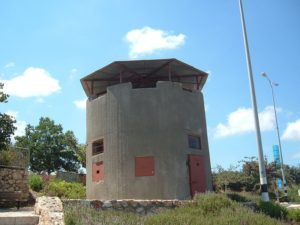June 1, 1938 Tegart’s Wall
 June 1, 1938 Arab Murder, Mayhem, and Massacre
June 1, 1938 Arab Murder, Mayhem, and Massacre
Tegart’s Wall:
“One of my tasks whilst at Nazareth was to site a fence of barbed wire some seventy kilometres long which was built on the instructions of Sir John Tegart, an expert on security matters sent out by the Colonial Office. The fence ran along the northern frontier from the Mediterranean coast to the shores of Lake Huleh and was designed to check the hitherto free passage of rebels, arms and ammunition to and from Palestine with the connivance of both the Lebanese and Syrian Governments. The fence was seven feet high and consisted of two outer faces four feet apart with a tangle of wire in between. I walked the entire length of the fence, taking a British Police Sergeant over each section so that he could show the contractors where to build. On one section it was obvious on looking back that we had gone wrong for a few hundred metres, so I said to my companion, ‘We will change our minds. All great men change their minds.’ He replied at once, ‘They are the only people who are allowed to do so, Sir.’ This obstacle doubtless impeded illicit traffic across the frontier but it did not prevent it altogether. “
“The troops brought the armed bands of Arabs to battle on several occasions and trounced them thoroughly, but experience proved that warfare of this kind did not act as a deterrent but encouraged young villagers who were attracted by prospects of honour and glory to join the rebels. The Arabs had different feelings about the Irish, Scotch and English units against whom they fought. They feared and hated the Irish soldiers as people who were inclined to finish off the Arab wounded where they lay; the Scotch were regarded as fierce fighters who sometimes withheld quarter in the heat of battle; the Englishmen were recognized as a kind-hearted crowd to whose better feelings it was always possible to appeal.
Source: A Crackle of Thorns: Experiences in the Middle East by Alec Seath Kirkbride Published in Great Britain by John Murray Ltd in 1956, p. 104-107



